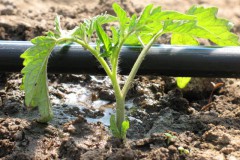What cement is made of?
Nowadays, it is probably difficult to find a person who would not know what cement is. Modern construction is unthinkable without this binder. But, despite the wide fame, very few have an idea of the method of its production. The name «cement» has Latin origin and translated «broken stone». The history of the use of binding substances for building its roots goes into the distant past. The first representatives were gypsum and lime. They were used even before our era for the construction of ancient structures, for example, the Great Chinese Wall and the Roman Pantheon. A distinctive feature of these materials is their ability to harden only in the air. Cement, unlike them, can harden in water. In 1756, the Englishman D. Smith, by firing limestone with clay impurities, managed to get a waterproof binding substance. He was given the name hydraulic lime. And already in 1796, his compatriot d. Parker patented cement, which had the ability to harden in the air and in water. In Russia, the production of cement in bulk began in the 19th century. And at the very beginning of the 20th century, 60 factories already produced it in Russia. Making cement is a very complex process. And the most time -consuming technological process is the production of the clinker — the main component of any cement. The starting raw materials for its receipt are limestone and clay. Approximate proportion: 75% limestone and 25% of clay. These components are crushed and mixed in a certain proportion. Then this sludge enters the firing. It is burned in long (200m) cylindrical rotating furnaces installed with an inclination to the horizontal axis. Fighting temperature — 14500C. Under the influence of such a temperature, the sludge is melted, sins and turns, in fact, into a clinker. The finished clinker leaves the furnace furnace. Then it is crushed, connected to gypsum (up to 6%) and other mineral additives that give it the necessary properties, such as the ability to quickly harden, resistance to low temperatures, etc. Then the grinding is produced to the powder state in which we are used to seeing it. The cement is divided by brands and indicated by the letter M and the number from 100 to 600. The number denotes the strength of the compression of the samples (prism) made of a solution with 1 part of cement and 3 parts of quartz sand. Other letters or numbers added to the brand indicate cement with special properties. Depending on the purpose, by changing the chemical composition of the clinker, as well as, thanks to additives, it is possible to produce cement of various types. The needs of ordinary construction are quite able to satisfy this material of the brands M300, M400 and M500.









Оставить комментарий